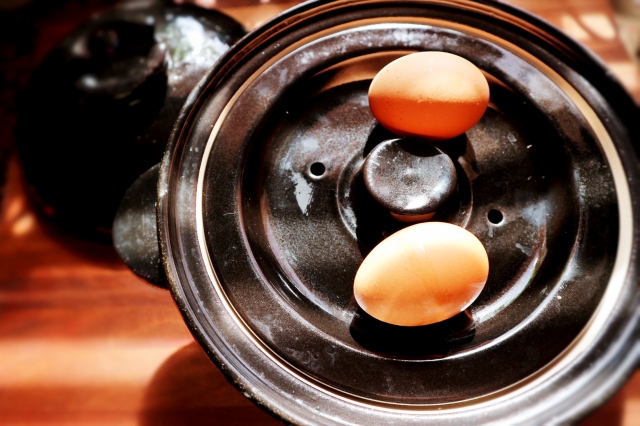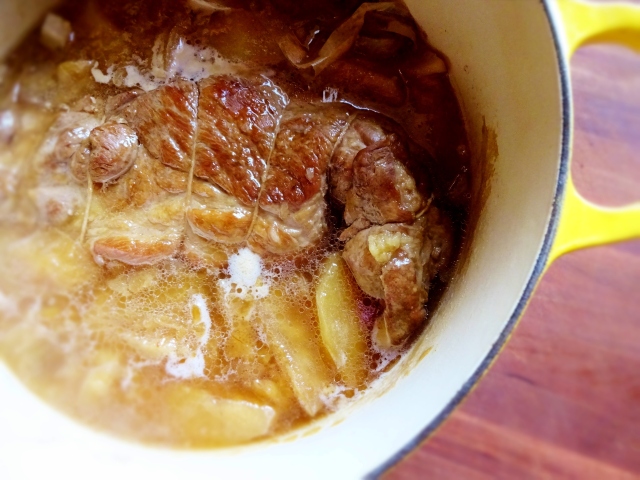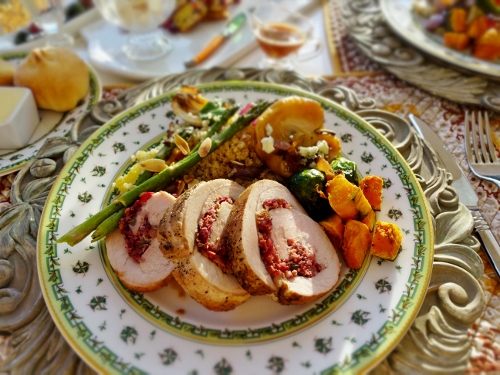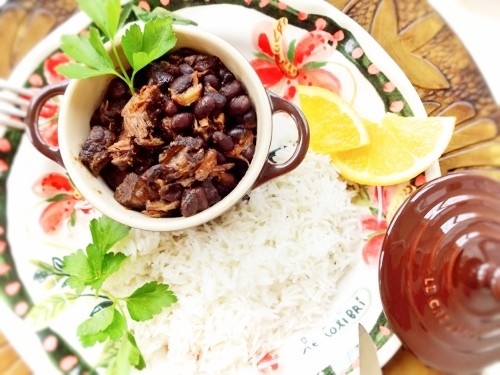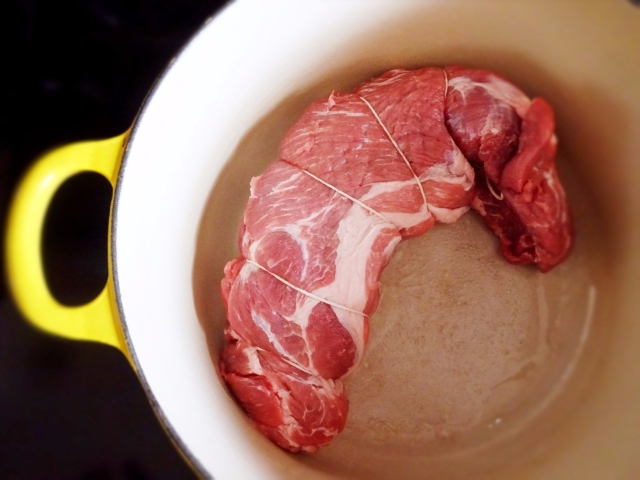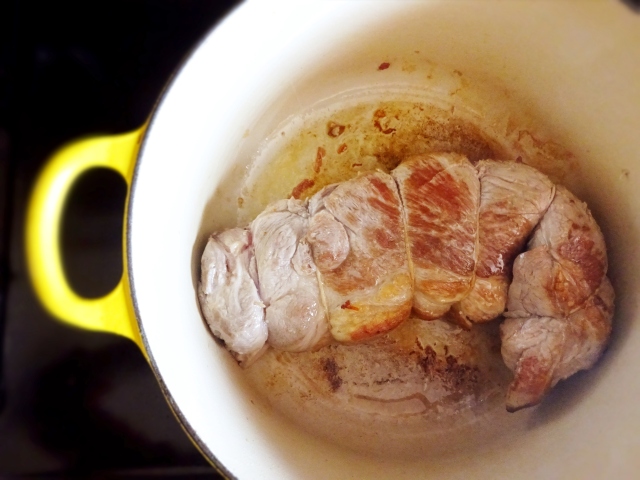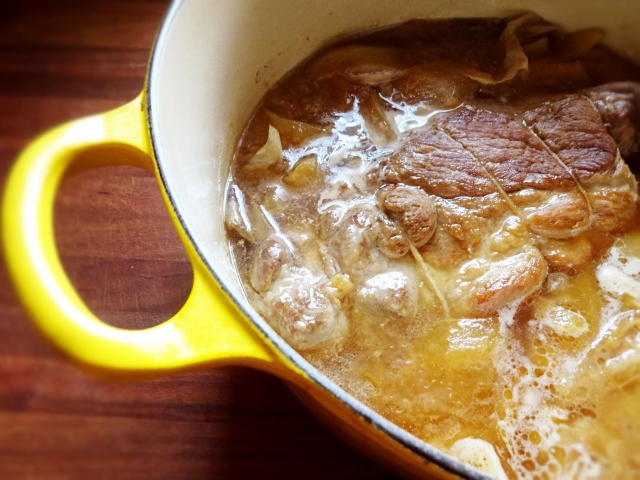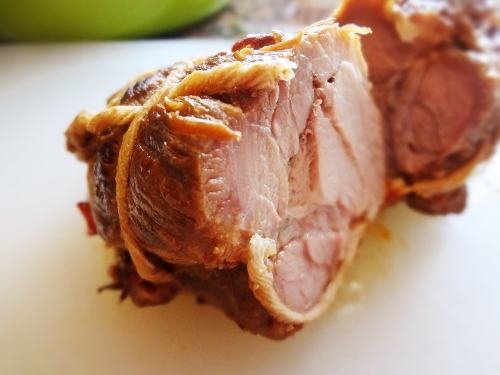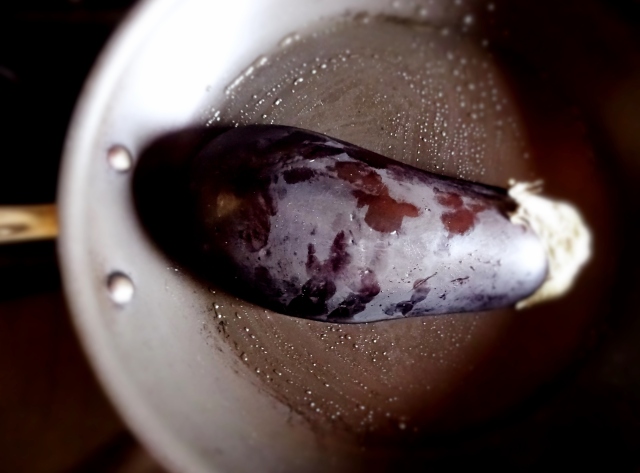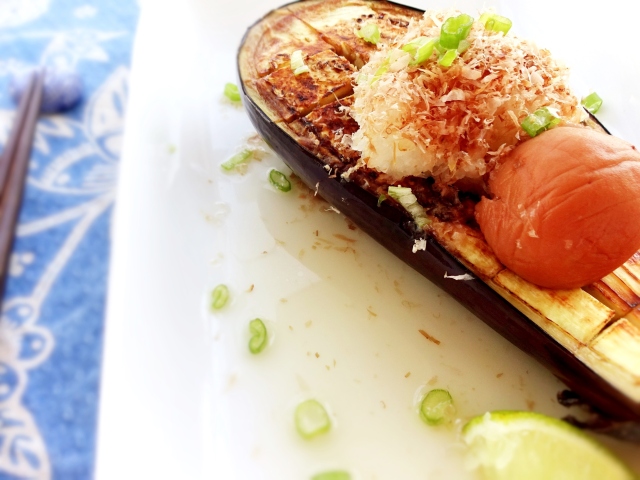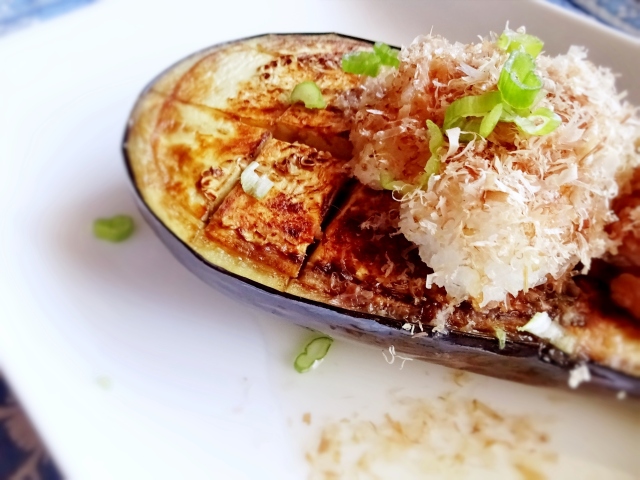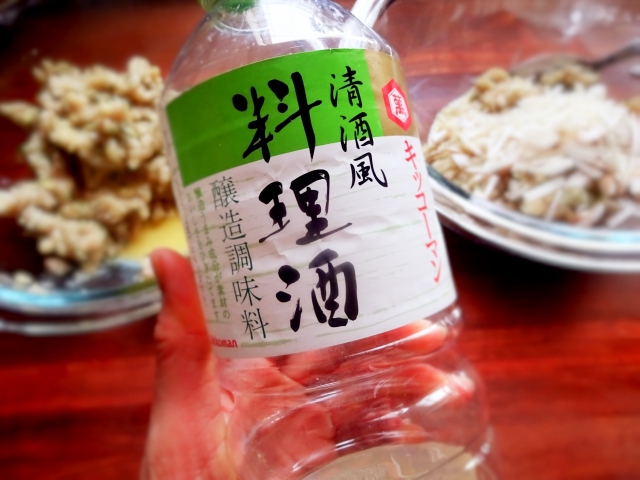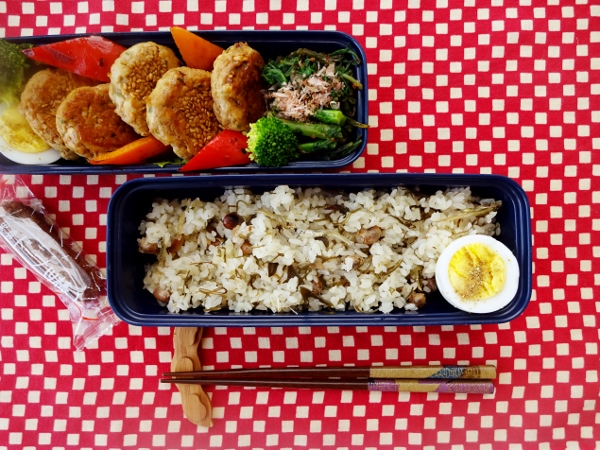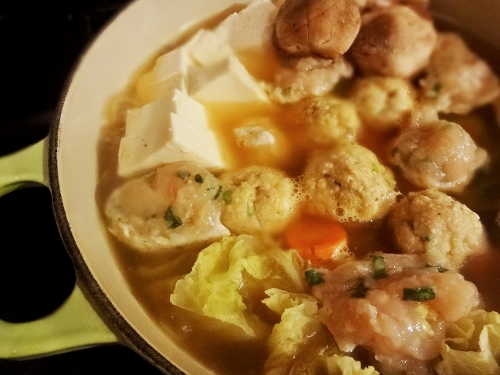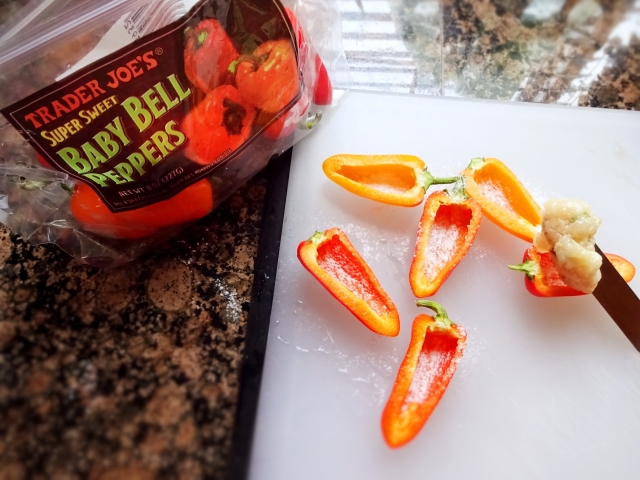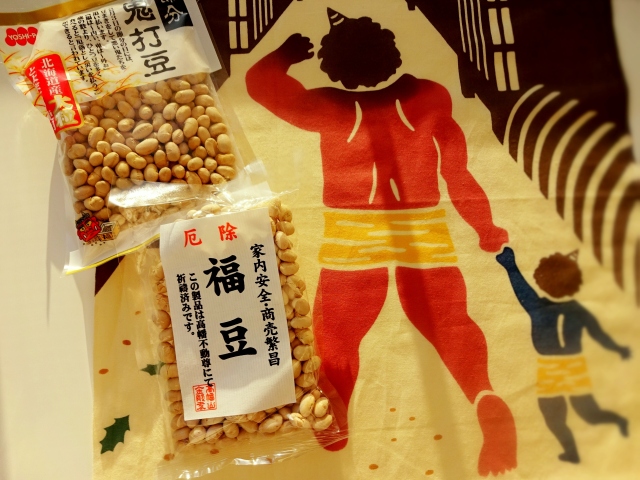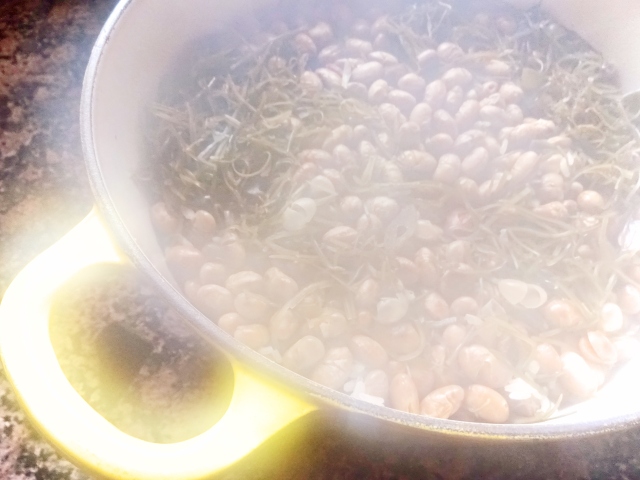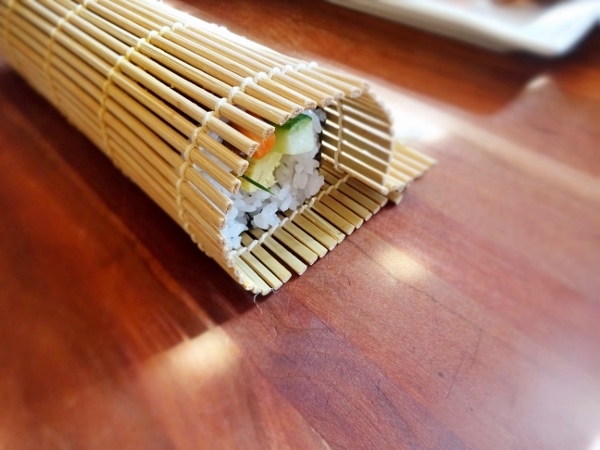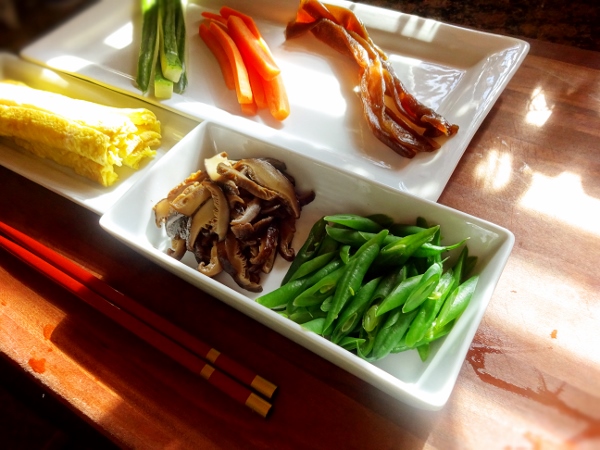
Food culture is very interesting. When I arrived here 15 years ago, I was so upset in a grocery store because I couldn’t find chicken thigh with skin without bone. In Japan, chicken thigh without bone has always skin. If not, how could we make Japanese style fried chicken, Ka-ra-a-ge!!! or OYAKO DON!! ( I haven’t introduce this easy and delicious rice bowl yet! I have to do that sometime soon!)
It has been 15 years. Still I can’t find chicken thigh without bone with skin, but I knew now that’s the way here, so I can accept that. I get accustomed to making ka-ra-a-ge with chicken thigh without skin. A little compromise.
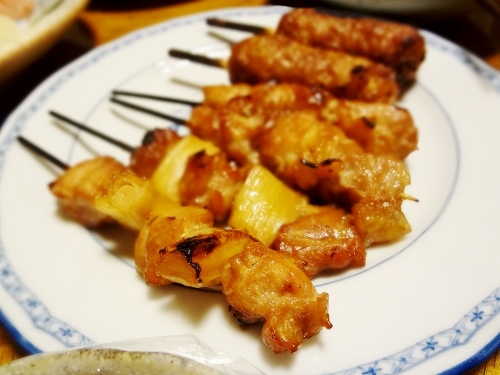
I don’t know why, but we Japanese love skin. If you have a chance to go to Japan, please try chicken skin Yakitori (chicken skewers). That is my favorite Yakitori. I love fish skin as well, especially salmon skin. Every time I give dried cod or salmon skin to my furry kids, I envy them.
Another thing I didn’t know the reason was about pork bellies. Why don’t they have thick pork belly in grocery stores? Very recently I finally found them sold in Wholefoods.
Japanese like FAT (you know the famous KOBE BEEF with marble of FAT!) , so we often use sliced pork belly (not bacon) in our dish. They are tasty , easy to use, and cook fast!
I go to Asian grocery store a few times in a month. The last time I went there, I purchased blocks of pork bellies. I didn’t have any specific menu I wanted to cook, but I thought I shouldn’t miss this good opportunity for me to get them.

Now I have some blocks of pork bellies in my hand.
What should I cook?
When I was a kid, I didn’t like meat as much as others, but I loved my mom’s KAKUNI (slow cooked pork belly). I know that is delicious, but I wanted to try something new.
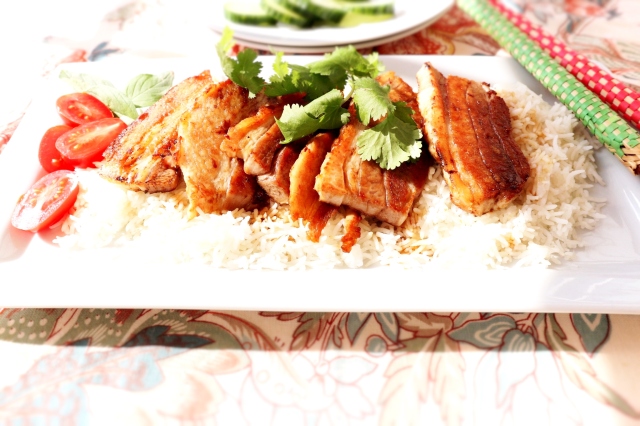
Today I will introduce BUTA (pork) MESHI (rice )!!
We ladies shouldn’t use this word, MESHI. The word sounds very mannish, but that’s why when I use this word for this dish, that sounds DELICIOUS.
Here are today’s ingredients for BUTA MESHI.
- 2 pork bellies ( about 1 pound each)
- green part of Asian green onion (thick green onion) (if you don’t have them, use regular green onion’s top parts)
- 3 or 4 slices of ginger root
- 1 tablespoon of white rice
- 1 tablespoon of shiokoji (if you don’t have it, use just 1 teaspoon of salt. Detailed in ka ra a ge article here)
- 5-6 tablespoons of brown sugar
- 4 table spoons of soy sauce
- 5 table spoons of mirin
- black pepper, cilantro (optional)
Then let’s cooking!
Rub pork bellies with shiokoji (or salt) and leave them about 10 minutes.

Put the pork in the pot, and then,,,
add white rice and green parts of green onions on top.
Why do we put white rice? It helps the meat get juicy and soft!
By the way, we use white rice when we cook DAIKON radish. That is because not only rice takes harshness of daikon radish but also it whitens daikon.
Return to the pork,,,

add ginger slices and enough water which covers pork, and heat until it boils. Skim off the scum, and put the lid on and turn the heat in low.
Check sometimes for skimming off the scum, and cook for about 1 1/2 hours or until pork gets soft.
Remove from heat, and leave it until it get cold enough.
Discard the green onions and ginger. Sieve the soup so that you could remove rice. Then put this in the fridge. Sadly my fridge is not big enough, so ,,,,

I keep them in the container. When you keep it in the fridge, put plastic wrap on the surface of the soup. Because,,,,

TA DA-!
I forgot to take the moment of this exciting event, so I used the photo I took the other time (not BUTA MESHI).
Look! I felt so good when I saw this fat! This helps me not feel guilty that much!
You could use the leftover soup for another use, like soup for Ramen.
This time I only used,,

MEAT!
By the way, you could keep this meat in the fridge for 3-4 days if you wrap them tightly with plastic wrap.
Now we make sauce. Put brown sugar, soy sauce and mirin in a small pot, and melt the sugar. set aside.
Return to the meat, cut the meat in half crosswise, and then cut it about by half-inch lengthwise.

Like this.

Sorry, this is a little thicker than half-inch, but my husband will be glad.
Heat a pan (preferably cast iron skillet) with no oil, and ,,,

saute them until they get browned.

If you see lots of oil, just wipe it with paper towel.

Looks nice already. Then,,

add prepared sauce and saute a little more. Since this sauce has lots of sweetness, be careful not to burn too much.

OH MY GOD! Looks good and smell good!

Since this pork was cooked until it got fork tender, they easily fell apart.
Prepare rice and put the pork on the rice carefully.
Pour extra sauce if you like.
I was about to serve this pork with Japanese rice (sweet and sticky), but I changed my mind. I decided to serve with Jasmine rice instead with cilantro. You could grind black pepper on top if you like.
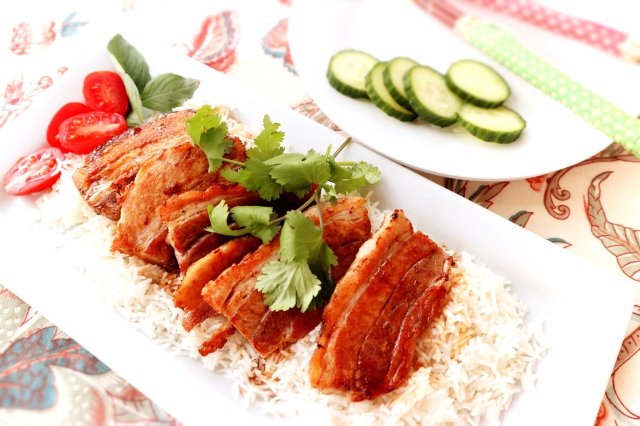
I though this was too much for one meal, but my husband finished them all!!
He said,
This is so tender. So delicious. Even though they are pork bellies, they are light!
Once you prepared cooked pork, you can flavor the pork with any flavor. You could go to Vietnamese flavor using fish sauce and red hot chili or you could go to American flavor using BBQ sauce! You could make sandwich with them, too!
I hope you enjoy them!
















